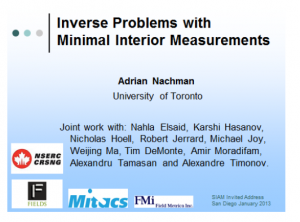We are very excited to announce that the 2013-14 Connaught Scholarships for Doctoral Students has been awarded to two of our newly admitted students:
Marcin and Michal Kotowski
The Connaught International Scholarship for Doctoral Students provides financial support to outstanding international doctoral students and assists Graduate Units in recruiting and supporting top international graduate students.
Marcin and Michal are brothers and work in the fields of discrete probability and geometric group theory. They are graduates from the University of Warsaw.


